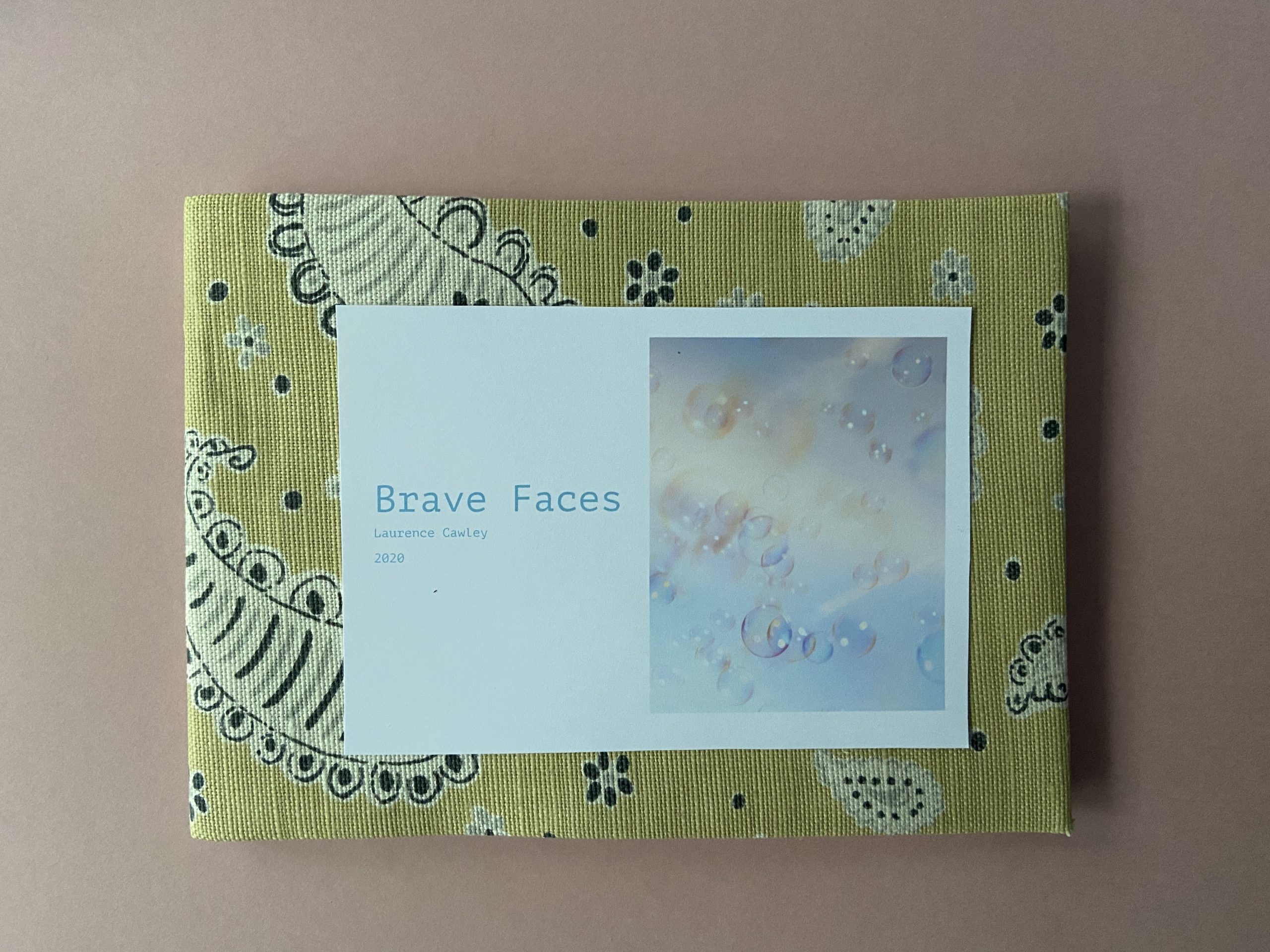Okay, I’m hooked. I’ve never made a book of any sort before. But I’ve found planning, sequencing and the act of making, choosing and creating a small photobook really helpful in the overall handling of my project.
Jorg Colberg’s Understanding Photo Books: The Form and Content of the Photographic Book asked a series of key questions before I got started. He asks: “What do you want the experience of the photobook to be? Think both in terms of the images and the form of the book. What does it do? What does it tell? How does it tell?”
I wanted the book to be small, like a child’s storybook, and one that has a warm and comforting surface. But I also chose a slightly retro fabric, hinting at the 1970s, the decade in which I was born. I also chose a front plate that stood in slight tension to the fabric covering, as that was in keeping with the content contained inside.

In Colberg’s discussion of Laia Abril’s The Epilogue he said: “Abril realised while photography is expressive in a wide variety of ways, it still has limits. Especially in the context of a photobook, text can help tell parts of a story that photographs, well, can’t.”
That reassured me about putting in three word cards from my father’s book Brave Faces. Just a few words, not even full sentences, or, to borrow a phrase from Marianne Hirsch, ‘image texts’. They were included to tell that part of the narrative that images “well, can’t”.
Another key element was the huge difference between planning for pages and planning for walls. And this for me, changed the sequencing. You’ve effectively got what I’m calling ‘dyads’ and ‘lingers’. Dyads being how to images will work together when on opposing pages. Lingers are the right hand side images and their relationship with the next image after the page turn.
It was such a different concept compare with thinking of a run of, say, four or five images.
Seeing my work in terms of dyads and lingers was an entirely new thing for me. I doubt I’ll ever be able to see a spread of my images again without thinking in those terms!
References
Laia Abril: The Epilogue, 2012
Colberg, Jens. Understanding Photo Books: The Form and Content of the Photographic Book (2017). Routledge
Hirsch, M. (2002). Family frames : photography, narrative and postmemory. Cambridge, Mass.: Harvard Univ. Press.




